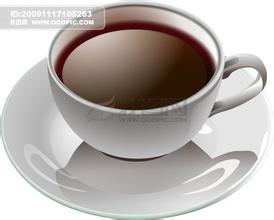High-grade vanilla sweet Bolivian coffee manor flavor taste characteristics of boutique coffee beans
Bolivia became independent during the War of Independence in Latin America in the 18th century, when it was rescued by Bolivar, a national hero from Caracas, Venezuela, so the country was named after him. On August 6, 1825, independence from Spain was declared, named the Bolivarian Republic, and later changed to its present name.
It formed a federation with Peru in 1836 and collapsed as a result of the Chilean invasion in 1839.
In 1863, rich saltpetre deposits were discovered in Atacama province along the Pacific coast. In 1879, Chile sent troops to occupy the mining area, and Bolivia joined forces with Peru to wage the "Pacific War" with Chile. Bolivia was defeated in 1883 and ceded the saltpetre-rich Pacific coast to Chile in 1904. Bolivia lost its only coastal province, including the important port of Antofagasta, and has been a landlocked country ever since. However, Bolivia has always claimed sovereignty over this place and claimed that the 1904 treaty was null and void. [3]
In 1932, the Chaco War broke out between Bolivia and Paraguay for oil resources in the North Chaco region. Bolivia was defeated and lost a large area of territory.
The people's armed uprising broke out in April 1952, and Paz Estenssoro, leader of the nationalist revolutionary movement, became president. Since then, there have been frequent military coups and long-term political instability. In October 1983, a modern bourgeois democracy with South American characteristics was restored.
On December 18, 2005, the presidential election was held. Aymara Indian, Evo Morales, leader of the Bolivian socialist movement, won the election with 53.75% of the vote and took office on January 22, 2006. He became the country's first Native American president and Bolivia's first left-wing president. The construction of the Bolivian state with progressive community socialism (that is, Indian socialism) as the basic value concept began.
On 25 January 2009, the 16th Constitution in the history of the Republic of Bolivia, which was also the first referendum, was adopted by 61.8% of the votes in favour.
On March 26th, Morales signed the Supreme decree declaring that the original name of the country would be changed from "Rep ú blica deBolivia" to "Bolivia (Plurinational State of)" (El Estado Plurinacional deBolivia).
Dry fragrance: various flowers, sweet vanilla, full aroma, sweet spices, honey
Wet fragrance: flower fragrance, refreshing perfume, sweet chocolate, berries
Sipping: many kinds of floral aromas, excellent cleanliness and fineness, fine vanilla sweet, delicate sugar, peaches, apricots, sour and sweet, premium Burgundy red wines, vanilla plants, green apples, white grapefruit, essential oil aromas, delicate and smooth touch, sweet finish and long-lasting aromas.
Record of in-depth visit to coffee producing areas in Bolivia
Osher's cup tester has served as the international judge of every CoE national competition, in terms of road conditions and climate, and even visa difficulties, when Bolivia is the most, but her coffee is so fragrant, even if the beer is also full of wild honey sweet, drinking at room temperature, that beer is like foaming caramel syrup, so far, the aftertaste of Takesi manor, drinking water and coffee after harvest treatment, using alpine melting cold snow landscape So we gave her a nickname: Takesi Snow vein Manor. In addition to a low-temperature, pollution-free environment, fertile and well-drained volcanic soil is also an element of coffee flavor. Although the owner of Agrotakesi SA is rich, he secretly respects nature and the way of getting along with each other, does not over-cultivate, and retains a large number of primitive forests and diverse ecological environment. It is famous for its crops such as apples, orchids and flowers, and now it has won the first prize in the coffee contest, and Takesi's reputation has become even more popular.
I remember that the admirable champion bean in 2007 was Coffee Manor, but her score was overtaken by the 2008 champion Cafe de Cordillera, when the international judges gave it a high score of 92.03. in 2009, Takesi Snow vein Manor got a score of 93.36, surpassing the champion of 2008, and the bidding price was as high as US $35.05. it was the highest bid in CoE national competition in 2009! Osher has been bidding for Bolivia's champion beans for three years in a row. She is really attracted by her delicate floral fragrance, charming sweet vanilla and clean and changeable flavor. In 2010, under the mixture of many factors, Bolivia decided to cancel the national competition. To examine this batch of Takesi winning beans, it was a mixture of feelings and hard-won.
The legal capital, the seat of the Supreme Court, with a population of 284000, 2790 meters above sea level. Founded in 1538, the city was formerly known as Chuquisaka. In 1809, the first uprising against Spanish rule broke out in South America. Bolivia declared its independence here in 1825 and became the capital in 1826. In 1839, it was renamed Sucre in honor of the second president of Bolivia, General Antonio Jos é Sucre. In 1898, the central government, presidential palace and parliamentary hall were moved to Russ, and the Supreme Court stayed in Sucre. Sucre has been listed on the UNESCO list of cultural heritage of mankind. [5]
Santa Cruz
Founded in 1561 with a population of 2.7762 million, it is a new industrial and commercial city, the second largest economic and cultural center in the country, and the capital of Santa Cruz province. Located in the eastern plain, 437 meters above sea level, with an annual average temperature of 23.8.
Kochabamba
The third largest city in the country, the capital of Cochabamba province. Located in the river valley in central Bolivia, it is an important transportation hub. It has a population of 1.9384 million and is 2558 meters above sea level. [7]
Listening to voice in geographical environment
Location domain
Bolivia is located in central South America, a landlocked country. It is bounded by Brazil in the northeast, Paraguay in the southeast, Argentina in the south, Chile in the southwest and Peru in the west. It belongs to temperate climate. It is an inland plateau country in South America. With a land area of 1098581 square kilometers, it ranks fifth in South America and eighth in America. [5]
Geographical location
Topography
Most of the east and northeast are Amazon alluvial plains, accounting for about 60% of the country's area; the central part is a valley area, which belongs to the eastern foothills of the Andes, where agriculture is developed and many important cities are concentrated; and in the west is the Bolivian plateau, with an average elevation of more than 1000 meters.
Hydrology
The main rivers are the Beni, Mamore and San Miguel rivers. Lake Titicaca, on the border with Peru, is 3812 meters above sea level. It is the largest lake in South America and the highest freshwater lake in the world. It is navigable all the year round. It is the main road between the two countries and the birthplace of South American ancient culture. [5]
Lake Titicaca
Climate
The eastern and central part belongs to the savanna climate, the transition from the western mountain to the subtropical climate, and the inland plateau to the mountain climate. The climate in most areas is dry and cool; the annual precipitation decreases from 2000 mm to less than 100mm from northeast to west. [7]
Natural resources listen to voice
mineral products
Rich in mineral resources, mainly tin, antimony, tungsten, silver, zinc, lead, copper, nickel, iron, gold and so on. Mineral deposits are rich, with tin reserves of 1.15 million tons, ranking second in the world; iron reserves of 45 billion tons, second only to Brazil in Latin America; and lithium reserves of 100 million tons, ranking first in the world. [7]
Petroleum and natural gas
Bolivia is rich in oil and gas resources. Proven oil reserves are 929 million barrels and proven natural gas reserves are 52.3 trillion cubic feet as of 2013.
Forestry
Rich in resources, the forest covers an area of 530000 square kilometers (53 million hectares). The main wood varieties are mahogany, red juniper, American oak, sandbox wood, heavy ant wood, Yibei and Longfeng plant.
Fishery industry

Important Notice :
前街咖啡 FrontStreet Coffee has moved to new addredd:
FrontStreet Coffee Address: 315,Donghua East Road,GuangZhou
Tel:020 38364473
- Prev

Strong sweetness of Panamanian Rosa Coffee Flavor and Taste introduction to boutique coffee beans in manor area
Over the past century and a half, a number of foreign companies have signed contracts with the Nicaraguan government and planned the route of the canal, but these plans have come to nothing. Will Wang Jing be the exception? Due to the rapid progress of the project and the huge consumption of funds, many people even doubt whether the project will start or even end badly. But according to CNN, Chinese engineers have arrived in Nicaragua.
- Next

Flavor and taste characteristics of coffee manor in Ecuador introduction to Galapagos Coffee
Central mountain: after entering Ecuador from Colombia, the Andes is divided into the eastern and western Cordillera mountains, with a plateau high in the north and low in the south, averaging between 2500 and 3000 meters above sea level. The Andes run through the middle of the border. The ridges crisscross, dividing the plateau into more than ten intermountain basins. The most important are the Quito basin and the Cuenca basin in the south. Volcanic crowds in the territory
Related
- Detailed explanation of Jadeite planting Land in Panamanian Jadeite Manor introduction to the grading system of Jadeite competitive bidding, Red bid, Green bid and Rose Summer
- Story of Coffee planting in Brenka region of Costa Rica Stonehenge Manor anaerobic heavy honey treatment of flavor mouth
- What's on the barrel of Blue Mountain Coffee beans?
- Can American coffee also pull flowers? How to use hot American style to pull out a good-looking pattern?
- Can you make a cold extract with coffee beans? What is the right proportion for cold-extracted coffee formula?
- Indonesian PWN Gold Mandrine Coffee Origin Features Flavor How to Chong? Mandolin coffee is American.
- A brief introduction to the flavor characteristics of Brazilian yellow bourbon coffee beans
- What is the effect of different water quality on the flavor of cold-extracted coffee? What kind of water is best for brewing coffee?
- Why do you think of Rose Summer whenever you mention Panamanian coffee?
- Introduction to the characteristics of authentic blue mountain coffee bean producing areas? What is the CIB Coffee Authority in Jamaica?

